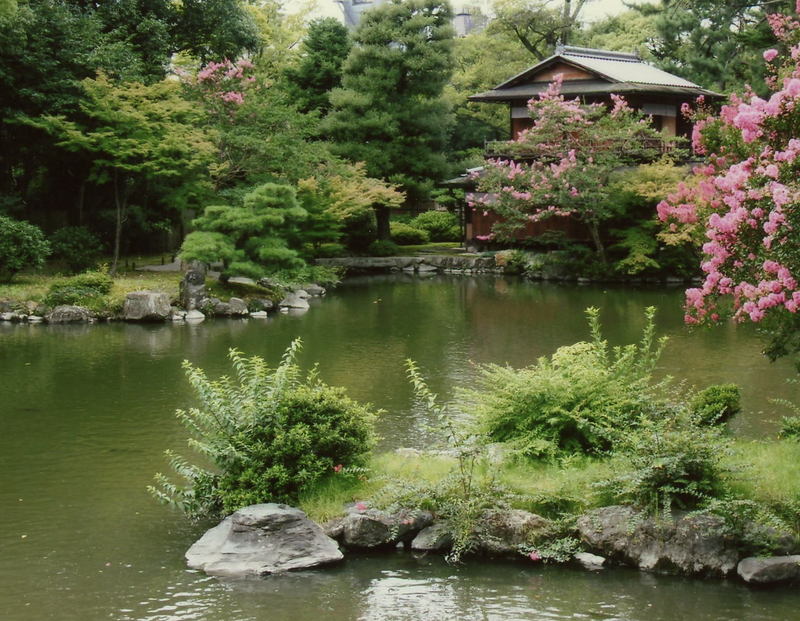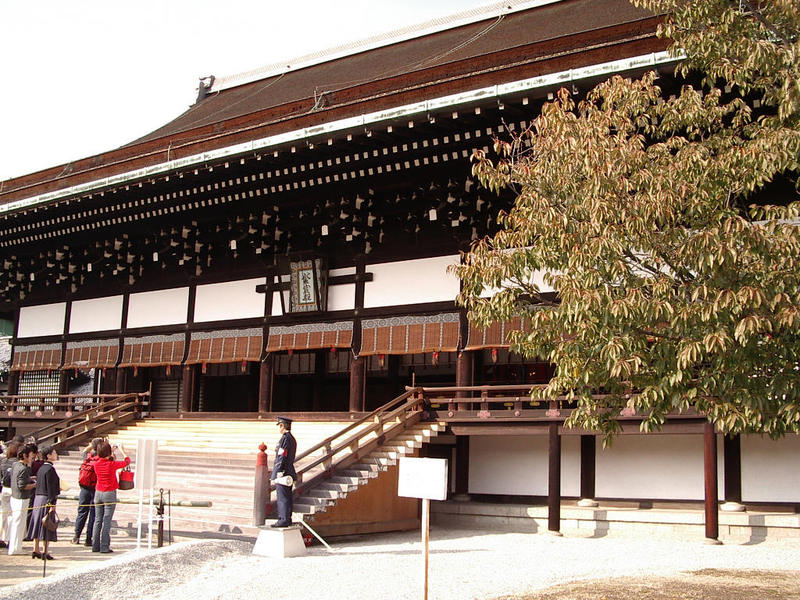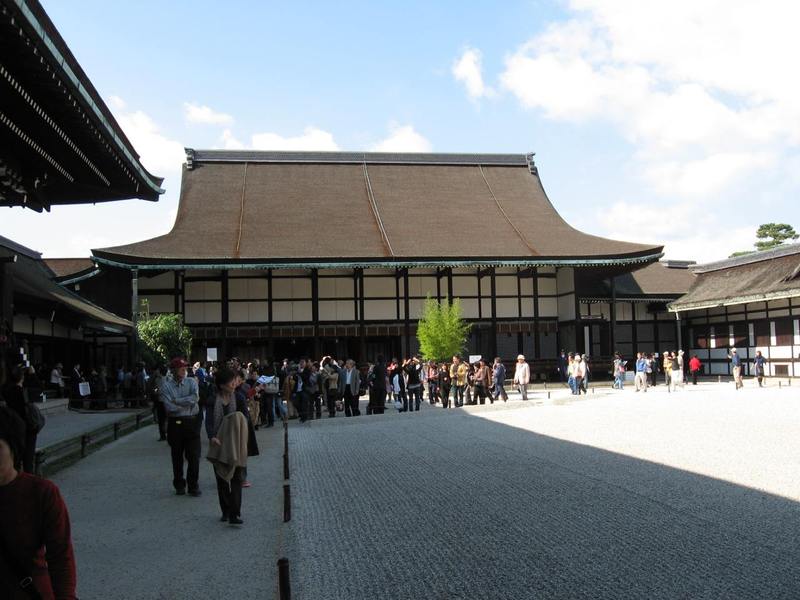Imperial Park, Kyoto
The Kyoto Imperial Park (Kyoto Gyoen) is a large area in the central area of the city, in which there are two main important buildings, the
Kyoto Imperial Palace and the
Sento Imperial Palace.
Around these buildings, whose entrance is very limited (see the respective sections below), there is a large free-admission park, which becomes very popular in spring when the many plum and cherry trees bloom.
In the southern part of the park there is a very particular area with a small pond, around which there is a small Shinto shrine, the
Itsukushima Jinja, and an old tea-house (
Shu Sui Tei). Another small pond (
Konoe pond), surrounded by many cherry trees, is located at the northern end of the park.
Around the park there are two other small Shinto shrines, the
Munakata Jinja in the southern part near the Itsukushima, and the
Shirakumo Jinja in the central part.
In the southwest corner of the park there is also the
Kaninnomiya Mansion (opening hours 9-16, closed on mondays), an ancient noble residence of the Fujiwara family, it can be visited free of charge.
 the Shu Sui Tei tea-house
the Shu Sui Tei tea-house
Kyoto Imperial Palace
This palace has housed the imperial family of Japan for hundreds of years until 1869, when the capital was moved from Kyoto to Tokyo.
The various buildings have been destroyed several times throughout history, the current ones date back to 1855, rebuilt after being destroyed by fire, trying to recreate the style of the Heian period.
You can visit the buildings free of charge, but the procedure is quite complicated and I don't know how much it's worth. You can visit the interior of the complex only by guided tour (in English) that you have to book in advance by showing your passport at the Imperial Household Agency office (opening hours: 8:45-12, 13-17, Monday to Friday), which is located opposite the entrance to the Imperial Palace (see map). If you go there on the day you intend to visit, you may not find places available, so if you are very keen to visit this place, book as soon as possible, especially in high season.

 the interior of the imperial palace (photo taken from wikipedia)
the interior of the imperial palace (photo taken from wikipedia)
Sento Imperial Palace
This complex was built in 1630 as the residence of the emperor Gomizuno, who had retired for old age. From that moment on, it was used as a residence for all other ex-emperors. In 1854 almost all of the original buildings of the complex were destroyed and never rebuilt.
In 1867 in this same place the
Omiya Palace was built, which is still used today by the imperial family during any stay in the city of Kyoto.
Very beautiful are the gardens that now occupy much of the complex, which also includes a small lake along whose banks there are two tea-houses which are also the only two remaining buildings belonging to the ancient Sento Palace.
If you want to visit this complex, you have to do the same I have written above for the Kyoto Imperial Palace, you need to book a guided tour (in this case only available in Japanese) going to the office of the Imperial Household Agency (opening hours: 8:45-12, 13-17, Monday to Friday) and showing your passport.
Sleeping, where to stay near the Kyoto Imperial Park
There are various hotels also around the Imperial Park.
I point out one of the cheapest business hotel in the area, with large rooms and excellent value for money, the
Palace Side hotel.
Pratical guide, how to get to the Kyoto Imperial Park and map
Near the northern part of the Kyoto Imperial Park, where there is also the office of the Imperial Household Agency, there is the
Imadegawa metro station, served by the
Karasuma line (9 minutes, 250 YEN from Kyoto station).
Near the southern area of the Park there is instead
Marutamachi station, the previous stop to Imadegawa along the
Karasuma line coming from Kyoto station.
Guided tours, activities and other things to do
If you are planning a trip to Japan and you want to do something more than just visiting famous places and monuments, we suggest you to use
Rakuten Travel Experiences.
How to use Rakuten Travel Experiences
Rakuten Travel is a very useful website to
enrich your travel experience, especially if you are going solo or it's your first time in Japan.
Because of the language barrier (and more), in Japan it is very difficult to interact with the locals and to get off the tourist track.
Thanks to Rakuten Travel you can find a lot of interesting and sometimes unique
guided tours and activities all over Japan (and not only in Japan), that you would otherwise never be able to enjoy.
But there's more: on Rakuten Travel you can also
buy tickets for several famous attractions, events, transportation and other useful services for tourists. Last but not least, you can
reserve a table in hundreds of restaurants.
Some examples
Take a look at Rakuten Travel Experiences
You may also be interested in